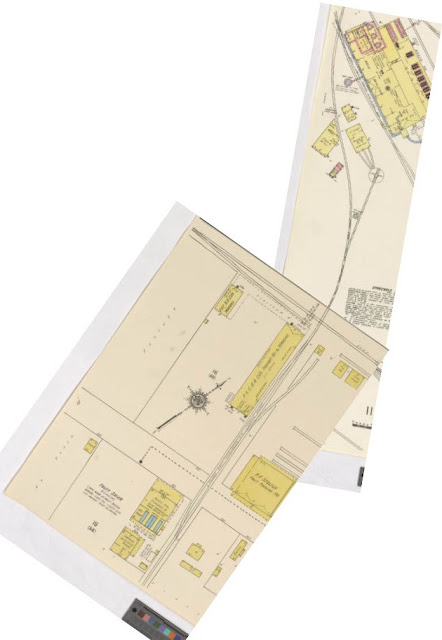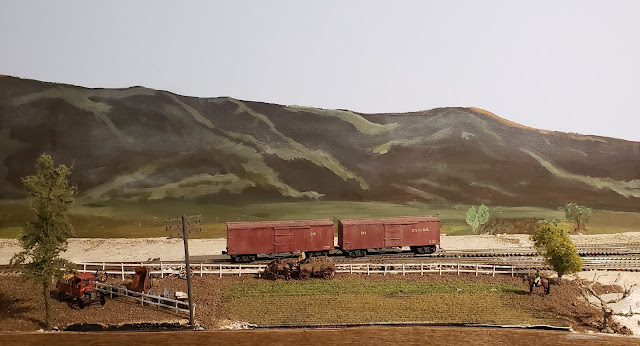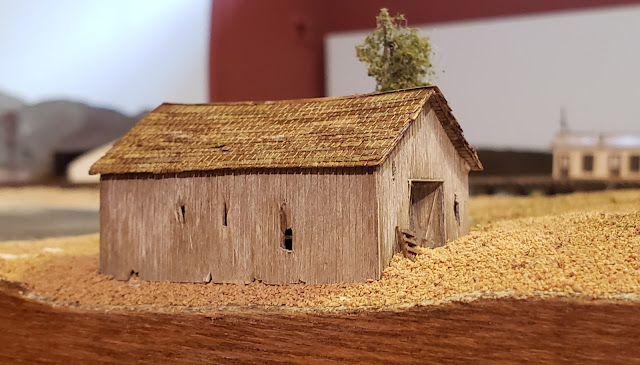Display, Performance, or Both?
 |
When focusing on the look of things, we often ignore how well things will function
|
In putting together my (currently limited) roster for the PVCRR, the goal of displaying the models and getting the look just right in time for the Los Angeles Division NMRA SpringRail 2018 was the motivating factor. I spent a lot of time and energy making sure everything was painted, weathered, and looked like the grainy pictures I had spent hours studying.
Not at the top of the list while building these? Smooth operating models. Of course I wanted them to run smoothly, but I didn't take the time to ensure that was the end result. The boxcars and passenger coaches looked great, but the tiny 2-6-0 couldn't pull more than four at a time, and even that was a challenge, particularly on curves.
With the upcoming Belmont Shore RR Club Open House, I decided that I needed to do some work on these models before setting them loose on the massive layout. I'll first list the problems I encountered, and then address the simple fixes.
First, the problems:
Trucks and Wheels
I wasn't as careful as I should have been while painting, and I used the various sizes of metal replacement wheels. I filed down the bolsters on the passenger equipment, trying to lower the ride height of the cars, and the trucks no longer fit snugly. As a result, the cars didn't roll very well, and the passenger equipment was constantly swaying wildly from side to side, and derailing regularly.
Couplers
The couplers weren't mounted at the same height across all of the equipment, I was also sloppy with the painting, and gummed up their operation. As a result, the cars didn't couple securely or easily.
Weight
I was careful to get the weight of most of the cars right per the NMRA Recommended Practice RP-20.1. However, the first class coach didn't receive any additional weight, as I was focused on constructing the interior of the car that is almost invisible through the windows.
Now, the solutions:
Trucks and Wheels
The first thing to go were the gummed up wheels with the over sized axles. I found some Atlas 33" metal wheels (I believe they are from Atlas at least) that fit the Micro-Trains trucks I use for the freight cars. At least in this case, these fit much better than the Intermountain replacement wheels made for Micro-Trains trucks. I've had no trouble with the Intermountain wheels on other cars. I haven't painted the replacement wheels as of yet. I'd prefer them to be painted, so I will likely do that at a future date.
 |
I had to remove the areas marked in yellow to allow for proper wheel clearance while turning
|
I also had to file down some of the underbody detailing on the freight cars. Whenever the cars would take a turn, I noticed that the wheels seemed to grind against the underbody framing. A few minutes with an X-Acto blade solved this problem.
 |
The filed down truck mounts (black parts with the hole) caused a whole lotta problems, because the trucks no longer had anything to properly attach to
|
The passenger equipment took a bit more work to solve. Bachmann designed these cars to be screw mounted. When I filed down the bolsters to lower the ride height, I removed the parts of the underbody that snuggly fit the trucks, causing the trucks to wobble and derail. To remedy this, I found Panamint Models on Shapeways, and worked with Eric to find the period appropriate truck (T57p, 5' center) with a bolster pin with the correct dimensions for the modified Bachmann cars.
 |
PVCRR #1 and #4 and their Panamint Models trucks, at San Joaquin on the Belmont Shore RR
|
The end result looks great, and operates perfectly. These were also fit with the Atlas wheels, and will be painted at some point.
Couplers
Micro-Trains doesn't have a coupler gauge for their True-Scale couplers at this point, so I used the standard gauge and checked to see that the True-Scale couplers were aligned with the center of the standard gauge. Those that were were set aside, the others received a closer look to address the problem.
After a few minutes of thought, I realized that this could be solved by simply raising the height of the box car. To do this, I used one of the tiny washers that come with Micro-Trains trucks, mounted it between the truck and boxcar body on the side of the car where the coupler needed some extra height, and in a few minutes all of the couplers were at the same height.
Weight
I don't know what to do with the weight of the passenger coach. I'm thinking of finding some heavy wire or small diameter tubing to place in the aisle between the seats. That would be the easiest thing to do, and not involve any chair removal. This step is TBD.
 |
The newly repaired PVCRR mixed train taking a trip on the Belmont Shore RR
|
With the above mentioned fixes, I was able to take what had (frustratingly) become display models, and get them into prime operating condition. All future models will undergo these performance checks as they are being built, with the hope that I can skip the part of the process where nothing works the way they should.
Products used:
Atlas - 33" metal wheels
Panamint Models - T57p 5' trucks
Micro-Trains Line - Coupler Gauge and truck spacer/washer (included with their trucks)











Great post! You touch on a couple of points that are relevant to everyone in the hobby, regardless of scale or prototype:
ReplyDelete1 - The balance between appearance and operation. For me, I want the models to look as accurate as possible, but if they don't run well, they're just not fun. So I've had to take similar steps on some of my models. I know a few expert modelers who built rolling stock as accurately as they could, only to find the finished models would not negotiate even generous curves on their layouts. The underbody details were exact, that that left no room for anything but "prototypical" truck rotation, which meant they needed prototype-sized curves to operate without binding and derailing.
2 - Developing a process to vet equipment. I really like your comment about putting all models through these performance checks "as they are being built". Sometimes, in our rush to complete a project, we defer or ignore this. And it always comes back to bite us. It's far, far easier to do these checks on a car as it's being built - it's less onerous than checking 10 or 12 cars after they've been finished and are causing problems on the layout.
Cheers!
- Trevor (Port Rowan in 1:64)
Trevor, Thank you for your reply. I've been enjoying your blogs lately, and am interested to see how the electric railroad turns out. I find the pile of cars needing to be repaired to be daunting, and ever growing. Finding the motivation to spend what is already a limited amount of hobby time on something like repairs instead of creating something new, or simply enjoying running trains, isn't the easiest. We'll see if I change my ways and implement these easy fixes as I build things. I'd like to say that will be the case, but...
DeleteSome of my collection don';t run very well---my Missus wants me to display them---sounds like an idea...if , after trying to get them running...fails!
ReplyDelete